Humboldt survivors embrace hockey, one another on uncertain path forward
TORONTO - When Kaleb Dahlgren was 2 years old, his dad dressed him in the Calgary Flames' alternate jersey of the day - a black sweater with red trim and a flaming horse on the front - strapped a pair of roller blades to his feet, and suggested the two of them imitate playing an NHL game.
Showdowns between Mark Dahlgren and his son quickly became a nightly production in the cement-floored basement of the family's home in Moose Jaw, Saskatchewan. Kaleb, often impersonating young Flames star Jarome Iginla, skated through a smoke machine as he entered the improvised arena. They warmed up to Mark's favorite AC/DC and Metallica hits and paused to sing "O Canada" together. At the end of three periods, they picked the city where they'd play tomorrow.
"He was into it like you wouldn't believe," Mark says. "Hook, line, and sinker."
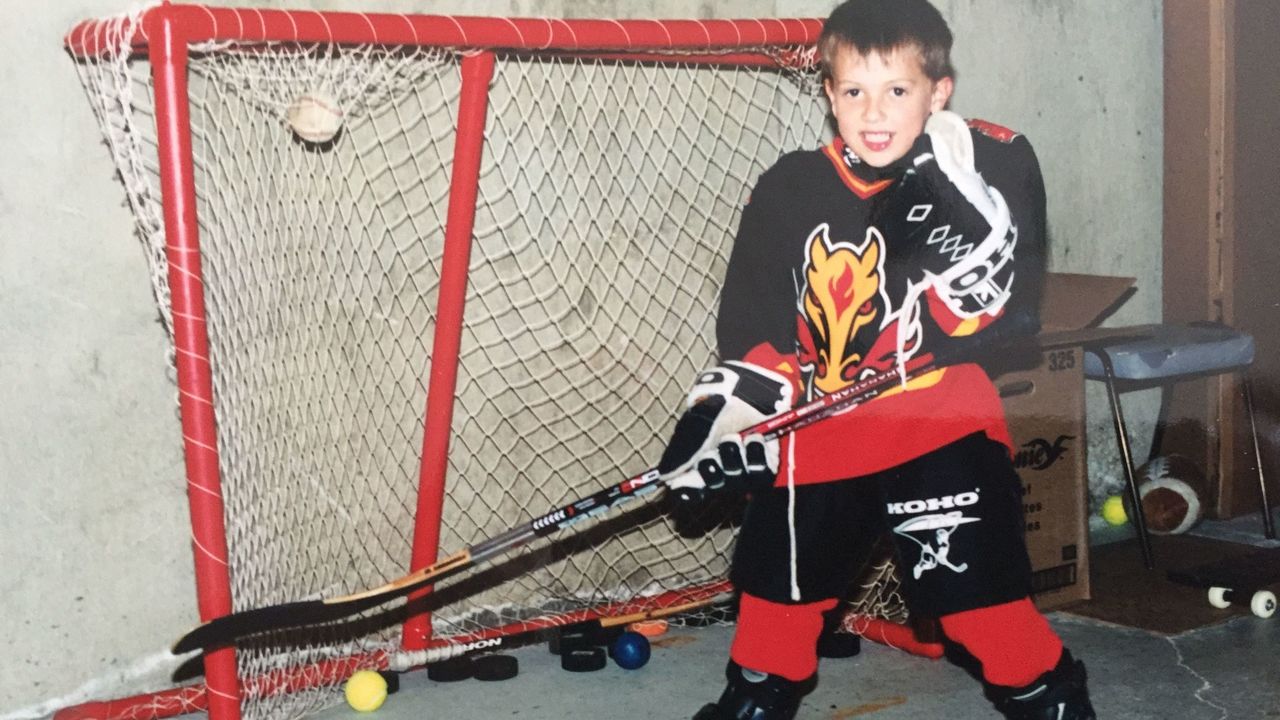
When Kaleb was 3, too young to attend school, Mark and his wife, Anita, dropped him off at a babysitter's house. He typically passed the time there by grabbing a mini stick and shooting on a small net. But on this day his sitter was puzzled: All Kaleb cared to do was sit still on the couch.
"Are you OK? What are you doing?" she asked him.
"I'm on the airplane going to San Jose," Kaleb replied. "That's where I play tonight."
At age 5, Kaleb declared at the dinner table that hockey was his passion. His parents didn't even know he understood the definition of the word. At 9, Mark and Anita took him on a group tour of the rink at the University of North Dakota - an event he dominated by asking, his father jokes, somewhere in the vicinity of 5,000 questions. The whole ride home, he kept telling them that one day he'd play at the university level.
Soon Mark and Anita signed Kaleb up with a personal trainer. He beseeched his parents to enroll him in every hockey camp the family heard about. As Kaleb got older, he swore off alcohol and refrained from getting a girlfriend until after high school, viewing the prospect as a potential distraction. He wrote down objectives on pieces of paper - record a certain number of assists in a year; earn a captain's letter at the start of a season - and taped them to the wall by his bedroom door.
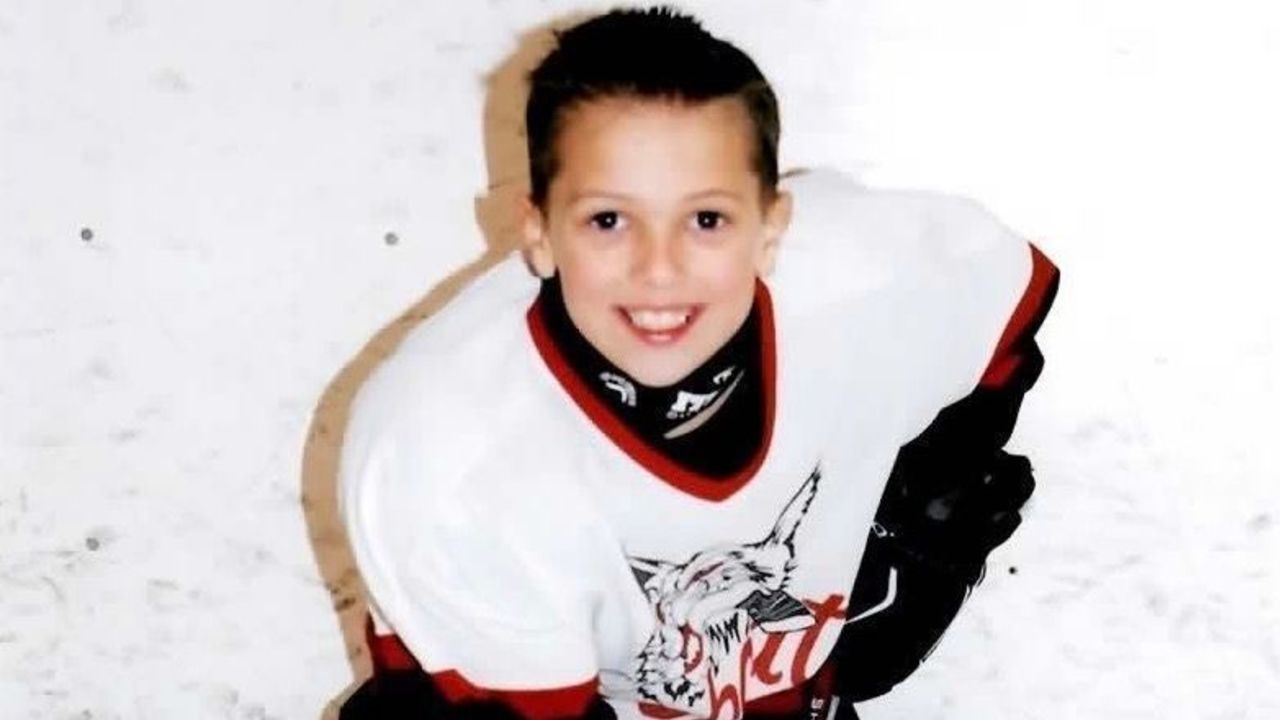
Kaleb played other sports but discovered they weren't for him. Baseball was too slow. Basketball's defensive rules seemed needlessly restrictive. "You've got to be able to take a hit," he'd think after smacking an opponent on the hand.
On the ice, Kaleb bloomed into a tenacious winger with a tendency to outmuscle bigger guys for loose pucks in the corner. He loved to hit, despite never growing taller than 5-foot-9, and came to believe that the camaraderie of a hockey locker room - a brotherhood forged by sacrificing one's body to better the team - was singular.
At every rung of minor hockey, he competed with a smile on his face. He wore an assistant captain's "A" during his last two seasons of Junior A, including, in 2017-18, for the Humboldt Broncos.
"He's devoted his life to hockey," Mark says.
Last year, on a sunny spring afternoon in rural Saskatchewan, Kaleb Dahlgren was badly hurt when a bus and a truck crashed at the intersection of two highways. Now he wonders if he'll ever get to play again.
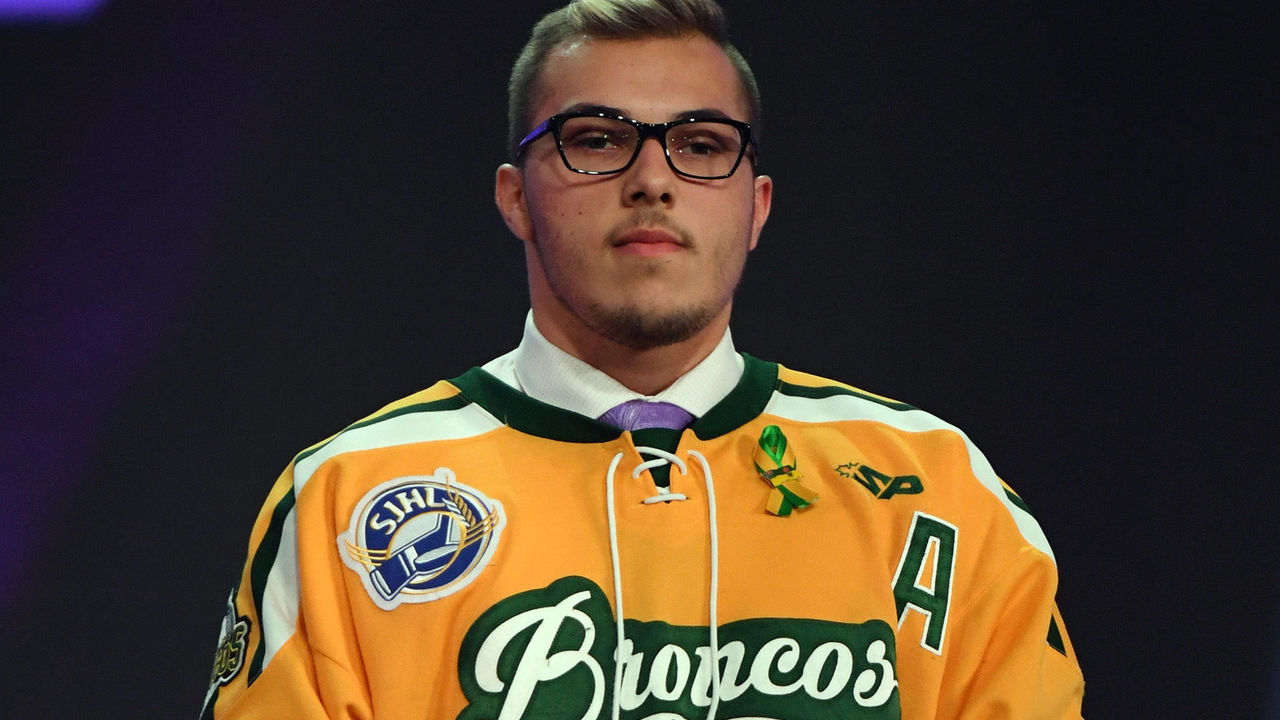
One year removed from April 6, 2018, the 13 young men who survived the Humboldt Broncos bus crash are dispersed across Canada, rehabbing their injuries, grappling with the mental toll of the tragedy, honoring the memories of the 16 friends and mentors who died, and trying to move forward with the rest of their lives. It is a weight only they can begin to understand.
Each survivor's situation varies. Some of them suffered brain injuries in the crash. Their bodies were scarred, lacerated, fractured, or paralyzed. Some of them suffer from anxiety, panic attacks, or post-traumatic stress. Some lost the ability to speak. Recovery isn't a uniform process, and for each of them, it's still ongoing.
Living in Humboldt, on university campuses, or in their respective hometowns across the Canadian Prairies, they have responded with courage and toughness, extraordinary strength and enduring grace. In public appearances, they express the hope that people will draw inspiration from their stories. In a private group chat, they talk nearly every week, bantering and offering words of support at opportune times.
Two things bound the Broncos on the afternoon they boarded the bus: hockey and each other. Those forces have become two of their guiding lights.
Ryan Straschnitzki, who was paralyzed from the chest down in the crash, describes the joy he has always found in his chosen sport like this: "Time doesn't exist. You're just out there having fun with the people you love playing with."
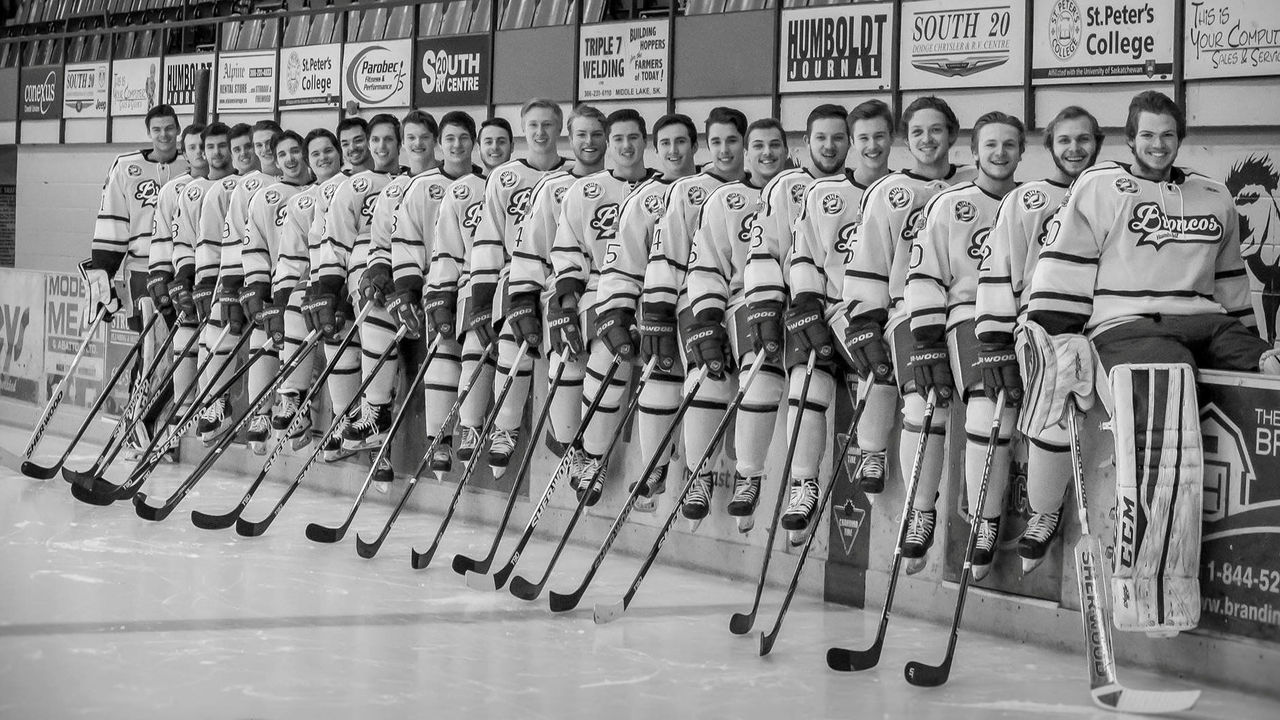
As many of his old Broncos teammates followed one path or another back to hockey - resuming their junior careers, joining university teams as rookies, taking up sledge hockey or assistant coaching roles, beginning to skate again with assistance - Kaleb Dahlgren represented a unique case. Most of his injuries have healed: the skull fracture, the broken vertebrae in his neck and back. He is a commerce student at York University in Toronto, preparing to write his last exams as a first-year undergrad.
As a member of York's men's hockey team, the Lions, Dahlgren is a single tantalizing step from achieving the childhood dream he crafted on a North Dakota interstate. But the gap between the 21-year-old and the fulfillment of that dream is evident in his stat line from the 2018-19 season: zero points in zero games played.
Through two-hour rehab sessions five times weekly at York's sport injury clinic, Dahlgren's back and neck have mended, as has an ankle ligament he tore last fall. But the brain injury he suffered in the crash is a different story. Dahlgren hasn't been cleared for contact since he was rushed to hospital in Nipawin, Saskatchewan, the destination the Broncos' bus never reached last April 6.
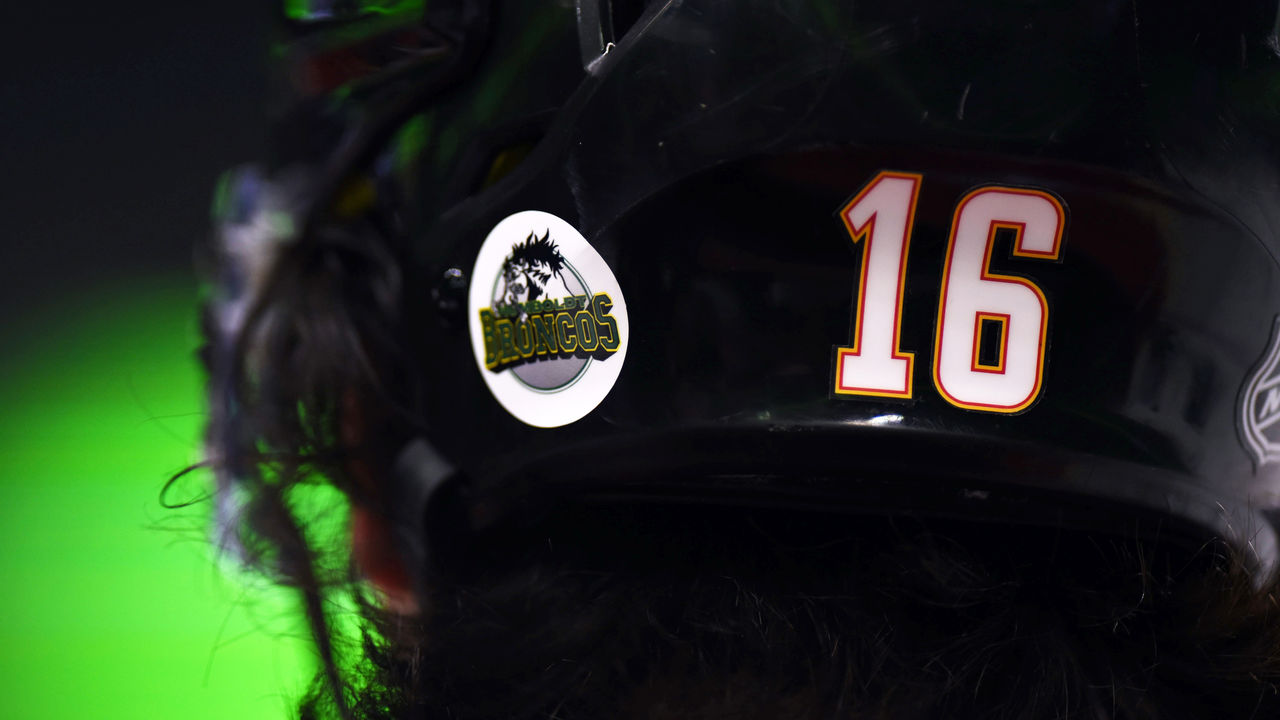
The prohibition means that even though he has been skating since last May, his future on the ice remains an open question. Getting medical approval to play requires him to ace a series of neurological tests, and so far he hasn't come close.
Back at his parents' home in Saskatoon, Saskatchewan, a handwritten note Kaleb left affixed to his bedroom wall reads, "Take Action For Your Passion." The past year has forced him to adjust to a difficult truth: There's little he can do for his ailing brain besides sleep 10 hours a night and wait to see what happens.
"(Playing again) would mean so much to me," he says. "The only issue is that I can't control it. I can't control my brain."
His Humboldt teammates who transitioned to university all played more than 20 games as rookies: Nick Shumlanski at the University of Prince Edward Island; Bryce Fiske and Matthieu Gomercic at the University of Ontario Institute of Technology. But Dahlgren was limited to wearing a yellow no-contact jersey at York practices. He attended home games in a suit but stayed behind during overnight road trips. He watched his team win nine of its first 12 games before injuries mounted and the Lions slumped to a losing record.

In the stands, Dahlgren got to see the sport unfold from a new perspective. The university game is faster and less physical than Saskatchewan's rugged Junior A circuit, suggesting to him that he'd do well to increase his foot speed - and retain his inclination to play the body in order to stand out.
He hopes he'll get the chance to apply his forethought in competition by the start of next season. Lots of shut-eye might help cinch this timeline; so might his work with leading neurologists, or the fact he's tried cranial and chiropractic therapy. Alternatively, his ambition and effort may amount to something less than enough.
"You have to accept it for what it is, and just be thankful for what you have," Dahlgren says. That includes the opportunity to practice and work out during the season, and to aspire to a greater role on game day.
"I use that as my motivation," he says, "as well as the 16 people that can't even be here."
A couple of months ago, Tyler Smith got 16 black birds tattooed onto the left side of his chest, above his heart and directly beneath a scar that runs along his collarbone. "Home is where the heart is," reads an inscription below the flock.
Smith is from Leduc, Alberta, but Humboldt is a city he will always hold dear. When Smith joined the Broncos in 2017-18 for his second season of Junior A hockey, he says he was welcomed into a locker room replete with talented players and better people. Togetherness with his teammates had drawn him to the sport from childhood, and now he was playing for a head coach, Darcy Haugan, who emphasized the importance of family when he spoke to his team.
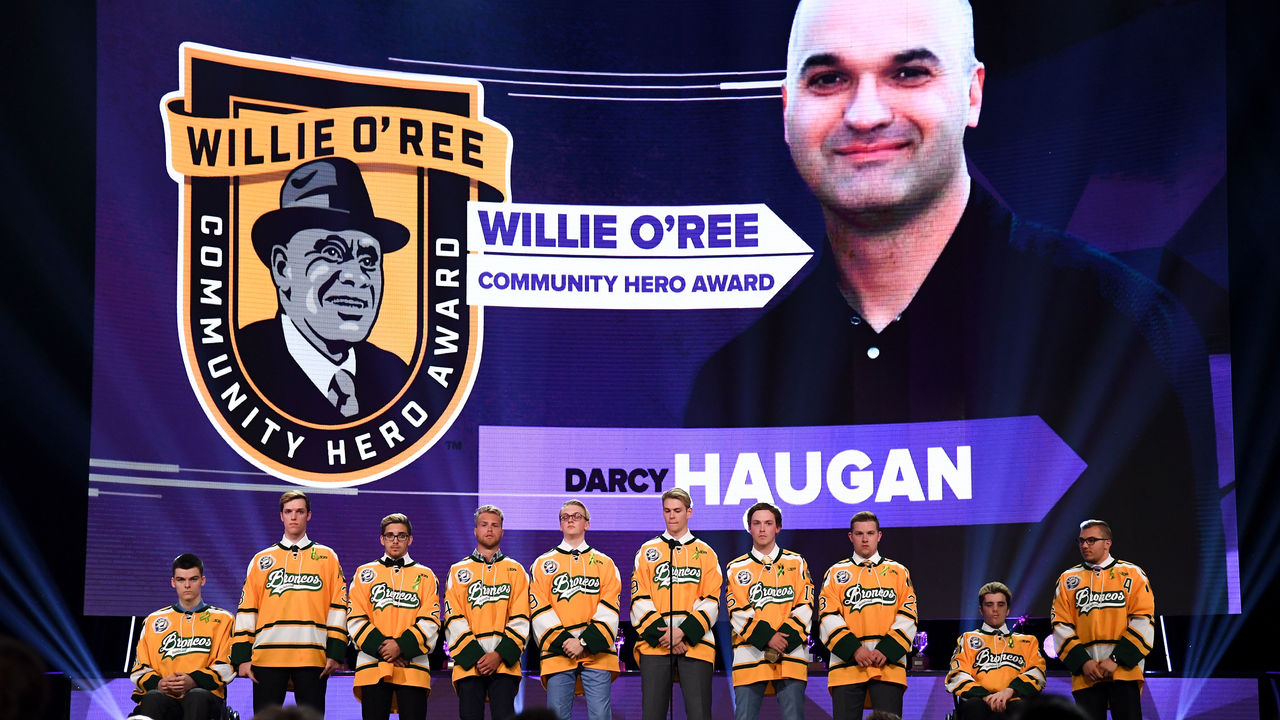
To Smith, those Broncos became a family in their own right. Everything they did together was easy, comfortable, special. Never a big scorer, Smith saw his role as a purveyor of humor, positivity - the properties that lighten a collective mood.
"As cliche as it sounds, the whole 'It's all about the boys' thing, it really is for me," he says.
I decided on this because Humboldt will always be a place I call home and my heart will always have a special place for Humboldt and my 16 beautiful angels. I know and feel that my angels are always with me, I love you all and miss you all so much 💛💚 pic.twitter.com/HPIMbjhf4y
— Tyler Smith (@LittleSmitty269) February 25, 2019
This past September, the Broncos returned to the Saskatchewan Junior Hockey League in a reconstituted state: Only two survivors, Brayden Camrud and Derek Patter, still had junior eligibility and were healthy enough come training camp to join the new roster. They immediately emerged as leaders on a team that went 35-19-4 and played into late March, when the Broncos lost in seven games in the second round of the playoffs.
It took Smith a little longer to recover from his personal catalog of injuries: the broken collarbone, shoulder blade, and ribs; the punctured lung; the nerve damage to his left arm. In November, he became the third survivor to don a Humboldt jersey again - until he decided to head home to Leduc after 10 games, too distracted by his thoughts to enjoy playing.
Smith says the new crop of Broncos are "awesome" guys; they made his transition back to the ice very easy. But it wasn't last year's team, and he didn't want his emotions to permeate the dressing room. Even if going back to Leduc didn't hasten his recovery, it at least delivered some solace. Many of his friends play for the local Junior B Riggers, and when he joined the club this winter for the final third of the season, he settled into a happy routine: tying his skates at the rink where he'd played as a kid and sharing laughs with some familiar faces.
"I didn't want to worry about anything," Smith says. "I just needed to embrace the game again."

Two hours south of Leduc down Alberta's busiest highway, Straschnitzki - a teammate of Smith's dating back to midget hockey - is living in a hotel in his hometown of Airdrie, waiting for his family's house to be retrofitted to accommodate his new physical reality, and embarking on his next chapter in hockey from a seated position. Just as Smith found fun and Dahlgren is keen for medical clearance, Straschnitzki is oriented toward a new goal: playing sledge hockey for Canada by the 2026 Paralympics.
To reach that ideal endpoint, Straschnitzki first needs to be cleared for contact himself. Stints with Team Alberta and the national development program would come next. The whole process starts with two sets of sessions he labors through four times a week: rehab at a spinal cord injury center in Calgary, where he strengthens his muscles and hones his balance, and practice at rinks in Calgary and the neighboring suburb of Okotoks.
Balance has been his chief concern there, too: Straschnitzki's paralysis sapped his core strength, and navigating a sled was an untried skill when he got back on the ice last summer. But as he says, hockey means everything to him. He started playing at age 4, has played it ever since, and still plays it now in a recognizable form. He's a smart player, a responsible defenseman with two-way ability, and all he has to do to succeed from here is work very, very hard.
"I've been training my whole life to be strong-minded with hockey," he says. "If I can keep this attitude going, I'm pretty hopeful."
Straschnitzki's coach and mentor, retired national team player Chris Cederstrand, attests to his student's drive. Whenever he regains some activation in his core muscles, they have to tweak the manner in which he operates his sled. So they readjust, Cederstrand says, and Straschnitzki keeps making "unbelievable" strides.

Soon, Straschnitzki expects to put his return to the game on hold. He and his family plan to travel to Thailand for experimental surgery in which an epidural stimulator will be implanted into his back, in the hope the device will allow him to use limbs and muscles he can no longer control. He'd stay for six or seven weeks and could depart as soon as May. Or he might wait until the end of summer, which would let him reunite with some Airdrie friends he hasn't seen in a while.
For now, he sticks to his weekly regimen - "Bad day or good day, he's out on the ice just absolutely crushing it," Cederstrand says - and makes a point of keeping in touch with the boys from Humboldt. It's difficult to live far away from the people who have the best idea of what he's going through. But he and Smith share the conviction that their connection will transcend distance and endure.
"We all went through the same thing," Straschnitzki says. "I think having each other to vent to or talk about our problems with, it's kind of like being in the locker room again."
Last April, on the morning after the bus crash, Kaleb Dahlgren awoke in hospital with a bandage on his head and his parents by his side. He alerted them to one of the first concerns that entered his foggy mind.
"Look at my legs," he said. "Look how small they are. I haven't had a good workout in a week."
Dahlgren wasn't quite himself in that moment; he soon started to swear, make sarcastic remarks, and chirp well-wishers who came to visit, each phenomenon totally foreign to his character. But he was indeed correct on that point: The Broncos' playoff run had limited the scope of his exertion to skating and stretching. Though it took him several days to comprehend the devastation the crash had wrought, his focus on the game apparently hadn't wavered.
In the coming weeks, Dahlgren kept defying the boundaries that his injuries might otherwise have imposed, an attitude that set the tone for the months ahead. Four days after the crash, when hospital staff planned to assess his ability to walk, he instead persuaded a physiotherapist to take him to the on-site gym. He walked on a treadmill, did light work on a stationary bike, and performed some standing squats. Only when he tried to transition to wall pushups did his minder cut the session short.
Two weeks later, Dahlgren was back in the gym and riding the bike when he was informed an MRI he'd recently undergone had returned with startling results. Doctors had only just discovered that he'd fractured four vertebrae in his back. Fearful the breaks could impact his spinal cord, they told him to stop pedaling - now.
"The timer hasn't gone yet," he replied.
A year on, Mark Dahlgren still can't be sure what the future holds for his son. But he is astounded at the extent to which Kaleb has recovered physically - it is nothing short of a miracle, he says.
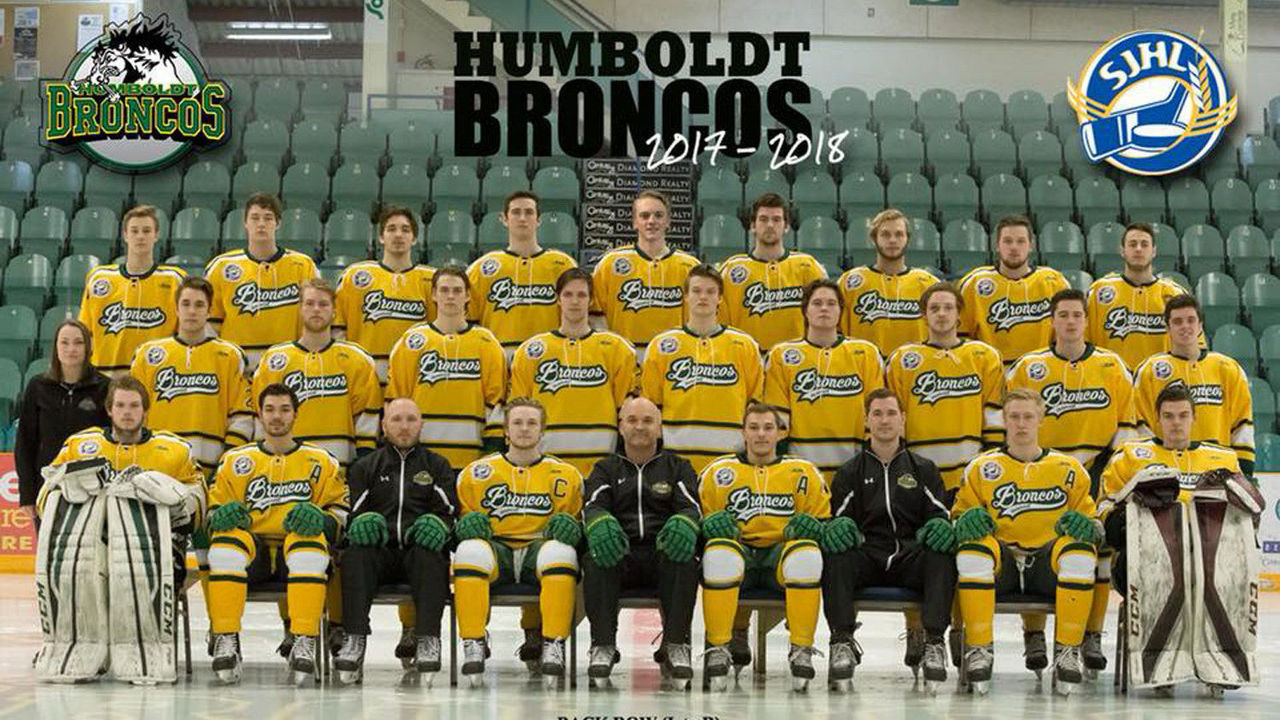
On the living-room wall of his apartment overlooking the York campus, Kaleb has hung the yellow alternate jersey he used to wear in Humboldt, the shirt the 2017-18 Broncos wore in their official team photo. The game has taken him to some wonderful places and introduced him to cherished friends. In the case of the 16 he lost on the bus, he says he'll forever be thankful to have known them.
Hockey imbues its players with resilience; it brings teammates together. In these ways, Dahlgren thinks it is helping him and his fellow survivors move forward. Each of them has been injured at some point in the past, he says, and if those ailments were less severe, they at least made them willing to do whatever it took to come back.
When Dahlgren talks about his Broncos team, he likens their friendship to a familial bond. In Toronto he'll catch himself repeating their favorite sayings: inviting people over for a "chill sesh," or calling somebody "A-A-Ron" in a nod to a "Key & Peele" bit. He recently stumbled across an old video of his Humboldt billet family singing "Happy Birthday" to Stephen Wack, a teammate Dahlgren considered a brother before he died in the crash. He told the group chat about his discovery.
"I didn't need anything at all," Dahlgren says. "It was just nice to know they were there for me."
Mentally, he says he is doing very well, in part because he's been able to accept the crash as an irreversible fact. Dahlgren has Type 1 diabetes, and when he was 6 years old, his parents outlined the choice he would face for the rest of his life: Manage the disease or let the disease manage him. Ever since he has tried to focus on things he can control.
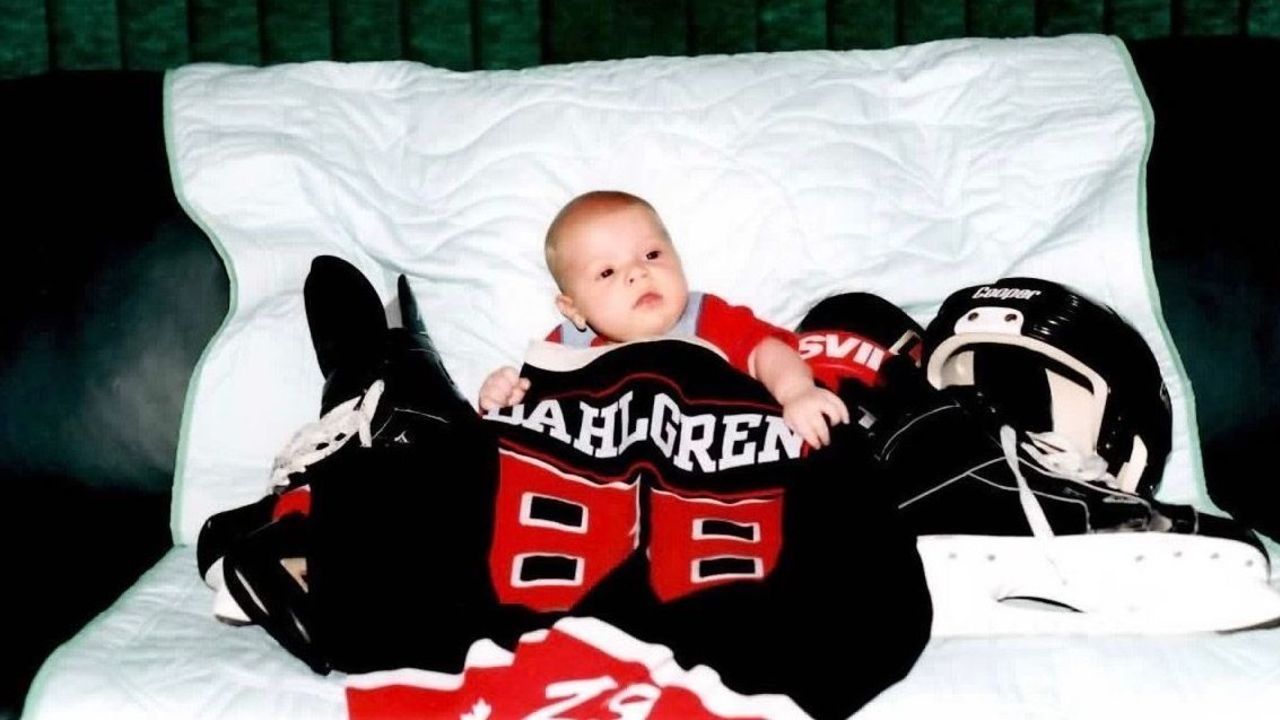
Dahlgren, true to form, can reel off a list of plans and objectives for his future. This summer he'll continue to promote Dahlgren's Diabeauties, a program he started in Humboldt to support local kids with diabetes. He plans to attend two diabetes advocacy walks in June. He'll take two classes online and do a bit of volunteering, and might also work at a high-level hockey camp in Saskatoon.
If his brain permits him to return to competition, he wants to finish his university career at York and seek an opportunity to play professionally abroad - maybe in Italy, he says, or even Australia. Then he'd apply to the intense four-year program at Toronto's Canadian Memorial Chiropractic College in hopes of becoming a chiropractor.
The barrier for admission is high, and the curriculum only gets tougher from there. But he says the challenge would excite him.
"Say a (chiropractic) session is 15 to 30 minutes. I have 15, 30 minutes to make (a patient) feel better," Dahlgren says. "They leave feeling better, and that's what I want. I want to make a difference in people's lives, and also create that bond."
In the immediate term, Dahlgren has settled on a plan for what he's going to do this Saturday, the first anniversary of the crash: celebrate the lives of his Broncos teammates by watching the final game they ever played together.
On April 4, 2018, the Nipawin Hawks led the Broncos two games to one in a semifinal playoff series when they met in Humboldt for Game 4. It became a triple-overtime thriller. The Broncos trailed 3-1 early on, scored four consecutive goals, and then squandered that advantage in the third period.
In the dressing room, the Broncos implored one another to direct pucks on net, aware that a shot from any angle could knot the series. The concession stand sent them muffins and granola bars to keep them fueled during intermissions. Dahlgren devoured three bananas to ward off cramps, but his legs still started to spasm shortly after Nipawin scored the winning goal.
Earlier, midway through double overtime, a rebound from a point shot had fallen to Dahlgren's forehand at the side of the crease. The nearest defender was a few feet away, and as Nipawin's goaltender lunged toward the post, he left the bottom half of the net open. But Dahlgren aimed high, straight at the goalie's glove, and the puck ricocheted into the corner.
"If I would have went five-hole, it would have been game over," Dahlgren says. "But you can't change it. You can't change it."
For now, the Broncos' loss goes down as the last time he laced up his skates in competition. Yet it wasn't his last chance to step onto the ice in Humboldt. He visited Elgar Petersen Arena in late August for the start of Broncos training camp and returned Sept. 12 to watch his old team's season opener. Banners bearing his number and those of his teammates were raised to the rafters.
The following week, Dahlgren's new team, the York Lions, flew from Toronto to Saskatchewan for a unique preseason road trip: the Mark Cross Humboldt Strong Remembrance Tour. The set of three Western Canada exhibition games honored Cross, the Broncos assistant coach and former Lions forward who died in the crash at age 27.
The second game of the tour was played in Humboldt, where Dahlgren was allowed to inch closer to the action. Barred from taking any contact, he could at least participate in a familiar ritual: the warmup skate.
Forty minutes before puck drop between the Lions and the University of Calgary Dinos, Dahlgren stepped out of the home bench and took a solo loop of York's half of the ice. His teammates had guilted him into accepting the recognition. The fans who'd already filed into the stands crowded the front row to pound the glass above the boards and Snapchat video clips of his smiling face as he skated by.
No. 16 paying homage. #MC18 💛💚 pic.twitter.com/D1oVhKW5Dm
— York Lions (@yorkulions) September 21, 2018
Devoted followers of the Broncos would have recognized the soundtrack playing as the teams got loose: 20 minutes of remixed rap and EDM hits, beginning with 2 Chainz's "4 AM," segueing into offerings from Maggie Lindemann, The Weeknd, and Skrillex, and ending with "Jumpman" by Drake and Future.
To Dahlgren, the music was familiar, too - he'd curated the mix himself a year earlier with Wack, his former billet roommate. When they listened to the finished version on Wack's computer, a happy realization dawned on them: "Holy, this is actually kind of good." The Broncos turned to the playlist for pregame galvanization whenever they played at home in the first half of 2017-18.
Dahlgren completed warmup in a custom white jersey with the words Humboldt Strong on the front and the last names of the crash's 16 victims listed alphabetically on the back. Later, he swapped that shirt for a red Lions sweater. Flanked by Brayden Camrud, Derek Patter, and a young member of Dahlgren's Diabeauties, he hunched at center ice for a ceremonial faceoff. Then he walked back into the dressing room and changed into street clothes.
"I was ready to go and play a game, but didn't play the game," Dahlgren says.

Still, the experience was rejuvenating. Wearing York colors as he skated in Humboldt for the first time since the crash made him feel like he'd been "reborn into the game." In the stands and out in the arena lobby, he posed for dozens of photos and shook hundreds of hands. Eventually, he managed to join his parents for long enough to catch five minutes of the game.
One of Kaleb's last acts before he left the ice that night had been to stand on the blue line for the playing of "O Canada," just like he and his dad used to do in the basement in Moose Jaw. Mark took a few photos of the scene. He sensed that his son felt totally at home.
As he flicked through his snapshots later, Mark noticed Kaleb had spent much of the anthem craning his neck toward the ceiling. Mark asked him what he'd been thinking.
"Just looking up to the boys," Kaleb told him, "and soaking it all in."
Nick Faris is a features writer at theScore. He's on Twitter @nickmfaris.